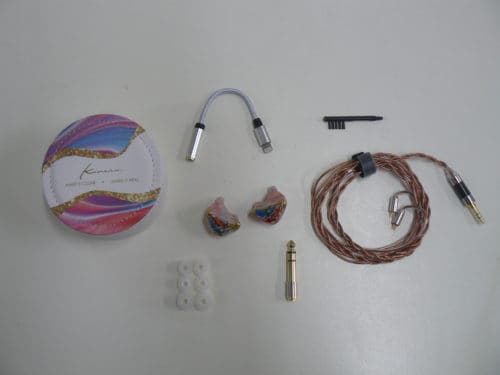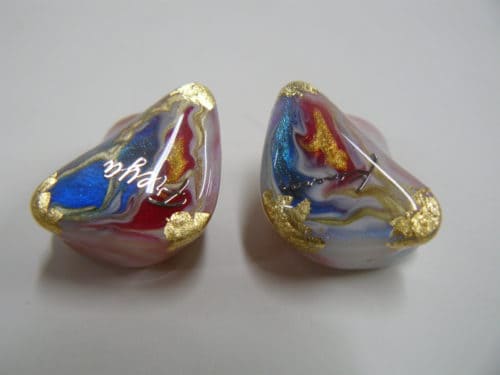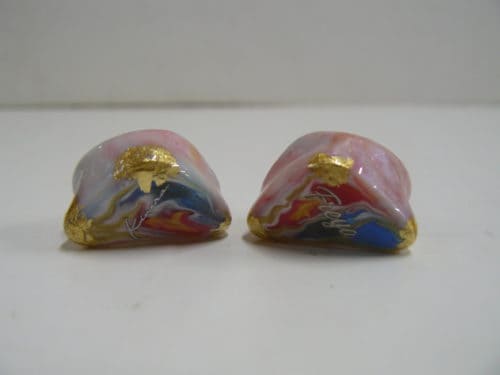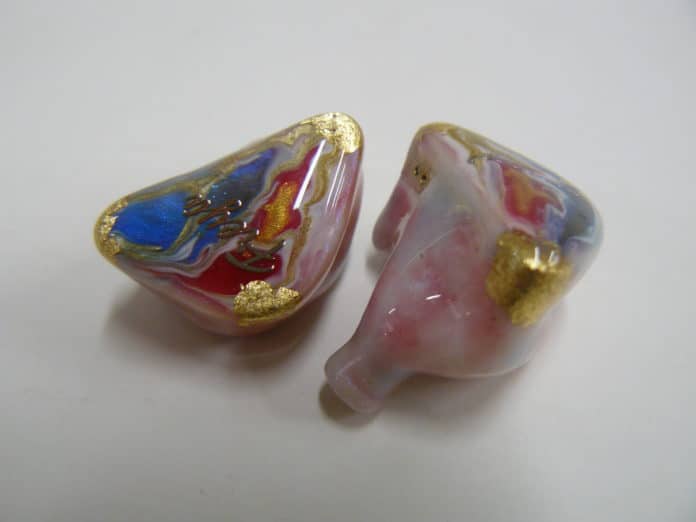It’s time the all-father bestowed another Kinera IEM upon our ears, so that we may once again bask in their eternal glory. Yeah, I like this brand a lot, and what better way to show how powerful they are than by naming them after the coolest Gods in all mythology. They’ve done Odin, Sif, and now the Goddess of love and beauty: Freya. Freya is the latest IEM from Kinera, an enigmatic brand that’s hard strapped on background info. I don’t know what the big secret is, because Kinera makes some of my favorite IEMs around. They use an aural signature that aims to capture and colorize the real feeling of the sound. Can the Freya live up to these high expectations? Let’s take a look.

What You Get
I like the boxes Kinera’s earphones come in. They remind me of a box of chocolates. The Freya box even has this peppermint swirl design, which fits the overall aesthetic of the pieces themselves since they resemble candy(no the Freya isn’t editable). You’ll find the IEMs themselves in their protective inlays, as well as several exciting new items. The first thing that stuck out to me was the fact that Kinera was so kind as to include a lightning adapter for iPhone users, and it looks to be a well made one at that. The next item you’ll probably notice is the round white storage box containing the 0.78mm two-pin connector cable made from high purity copper, and a 3.5mm headphone jack. The Freya also comes with an added eighth-inch adapter, and three sets of ear tips(s/m/l).

Look and Feel
As mentioned previously, the Freya earphone pieces resemble bits of peppermint candy and have a stylish gloss to give them an aura of beauty. Each pair is handpainted and carefully crafted. It goes along with the “prestige” IEM aesthetic a lot of pricey earphones are going for, such as lines from Noble, or Campfire Audio. They take on a more triangular shape, which surprisingly plays nicely with how the housing sits above your ear canal. The tips do a fine enough job at securing the earphone in place and don’t have any significant issues. I didn’t have any ear fatigue after long listening sessions and never felt the need to readjust them—an overall fine fitting IEM.

Design
The Freya advertises having a quad-driver hybrid. What Kinera has done is give these IEMs a single 7mm micro dynamic driver, along with three balanced armatures. With this, Kinera delivers an internal crossover that sends each range of frequency through their respective drivers, in aim to achieve neutrality and clarity in the Freya’s sound field. The overall design aims to convey a sense of noise isolation. The Freya isn’t a “noise-canceling” IEM, but the fit built not to allow much air to escape. This element works to a certain degree, as environmental ambiances can be softly perceived but are not distracting in any way.
Output
With the Fraya, you’ll get a high-quality signal, featuring 22 Ohms of impedance, and a frequency response of 20Hz-20kHz at a sensitivity of 110dB. Kinera aims to bring extension and enough output power so you can hear all of its details without having to crank the Freya to dangerous amplitudes.

Soundstage
I spent some time with the Frya playing with different amps and DACs, such as the Ultrasone Panther, so that could sweeten my perception of these IEMs. However, I could tell from my first few tests, that the Freya has a rich soundstage. Frequency bands are perfectly layered and sit nicely on top of each other. Spatial imaging is accurate and expansive, giving the Frya a heightened IEM soundstage that feels like it develops a tiny bit outside its shell. String sections in classical tracks and film scores are well defined and articulated with precision and soft glimmer. Because of the semi-noise isolating effect the earphone has, the Freya becomes a good audiobook or podcast IEM due to its ambient dampening, thus, enhancing vocal clarity enough to grab your attention.
Low End
Not only is there a respectful amount of balance and neutrality in the low end, but there’s also enough extension to achieve a profound sub-bass effect. The lows separate gracefully, and with an ample amount of gain as it sits in your jaw. Bass tracks are articulately defined and balanced with low, mid instrumentations with ease. Cello sections resonate with a soft glow, allowing them to compliment the middle section, and drive them with a touch of power. Lows also respond suitably well to punchy electronic/synthwave tracks and show an impressive amount of clarity to pounding rock kick drums.
Mids
The Freya makes full use of its mid-range extension, as fundamentals come in with pristine detail. There’s a more forward nature to the overall amplitude of this range, giving elements like vocal ranges a more intimate character. The mids are the centerpiece of the Freya, taking enough of the limelight to stand out in a significant way. Other mid-range instruments like guitars and pianos space out to provide a crisp resonance. Pianos especially hold a specific amount of delicacy and impact. Higher levels of gain might prove to bitter some of the pleasantries, like heavy rock tracks, but the Freya is going for a more natural sound that shines with more contemporary music.
Highs
The high end includes some sweetness and a lively bulk on volume. Higher frequencies avoid harshness by smoothing out specific bands, and without losing any sense of fidelity. Highs feel like they sit just above you and dance around with an aura of comfort. Female vocals in this range extend and produce soft sibilances that some may object to, but the right tracks can show off an airy quality that enlightens more ambient tracks.
Summary
Kinera set out to design the Freya with a specific theme in mind: beauty. They didn’t just call it the Freya for no reason. This IEM sticks the landing for what it sets out to do. It might not be a satisfying sound for some, but others will enjoy its soft details and pleasantries. For the affordable price of $249, the Freya is a must for those looking for a sweet sound.
Pros and Cons
Pros: Elegant timbre, pleasing design, soundstage
Cons: Might not satisfy some genres
Available from Audio 46
MAJORHIFI may get a commission from retail offers.
MAJORHIFI may receive commissions from retail offers.








